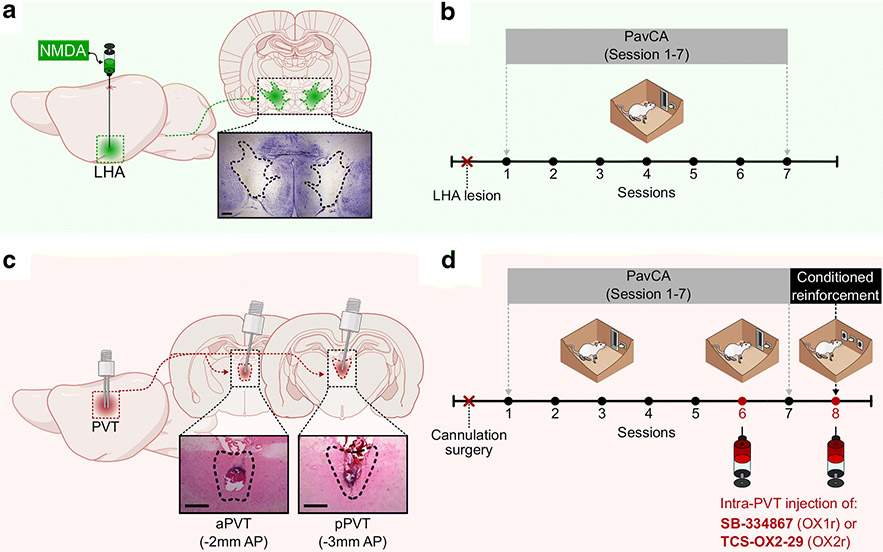Figure 1. Experimental timelines.
Experiment 1: a) Schematic of the excitotoxic lesion of the LH and photomicrograph of a representative lesion, and b) experimental timeline. Rats received 0.6 μl of NMDA in the right and left LHA. Sham rats underwent the same surgery but no injection was performed. After recovery from surgery, rats were trained in a Pavlovian Conditioned Approach (PavCA) paradigm for 7 consecutive sessions. Experiment 2: c) Schematic of the cannulation surgery to target the aPVT and pPVT and representative images of aPVT and pPVT cannulation sites, and d) experimental timeline. After recovery from surgery, rats were trained in a Pavlovian Conditioned Approach (PavCA) paradigm for 5 consecutive sessions (Acquisition) and phenotyped as sign- (STs) or goal-trackers (GTs). On the following day rats went through a PavCA test session (session 6) in order to assess the effects of OX1 or OX2 receptor antagonism in the PVT on the expression of PavCA behavior. The next day, all rats went through an additional PavCA session (session 7) with no drug or vehicle infusions to assess any lasting effects of drug infusion. Following the completion of PavCA training, all subjects were tested in a conditioned reinforcement (CRT) paradigm, in order to assess the effects of OX1 or OX2 receptor antagonism in the PVT on the conditioned reinforcing properties of the lever-CS.

